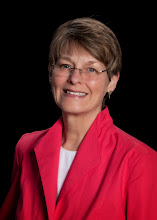The word emotion comes from roots that say “move .” The experience of emotion has an element of the involuntary. Feelings such as anger or fear can move us urgently to fight or flight. Feelings such as fondness and enthusiasm guide us toward cooperation and productive effort.
Our feelings can surge, wild and impulsive, on their own. In Emotional Intelligence, Daniel Goleman describes impulse as “feeling waiting to burst into action." Emotional intelligence includes the capacity to separate impulse from action and to insert reflective choice. Emotional intelligence is an important skill for the wellness journey.
Many of our least helpful habits are engrained and reinforced by emotional patterns. We eat when we are angry or bored or anxious. We abuse caffeine when we feel tired and alcohol when we feel shy. Loneliness can lead to mindless channel- or net- surfing. Healthier lifestyles call for learning new ways to work with emotions, attaching different responses to familiar stimuli. Our success in doing so can make the difference between good intentions and lasting change.
When the senses receive a stimulus, that stimulus is transmitted immediately to the amgydala, which reacts--and more slowly to the neocortex, which thinks. A reaction can become established in “emotional memory” and continue to function for a lifetime without passing through the reflective mind. Some paths are helpful, such as stepping on the brake when a bike darts into the street. Others are less helpful, such as reaching for a cookie when our partner makes a critical remark.
The process of building new habits entails re-wiring the brain, connecting key emotional stimuli with new responses. We bring the power of the neocortex into play, and make intentional changes to automatic patterns. We can learn to defuse anger with a workout, fatigue with a nap, anxiety with deep breathing, loneliness with a phone call instead of the unhealthy alternatives.
Where in your life do emotions hijack the brain on its way to thoughtful choice? Which responses would be healthier if you were not on auto-pilot? Pick one and lock in “manual controls” for a week. Keep notes that help you remember to stop, think, and choose differently. Watch the results and observe that new patterns become easier with repetition. While emotional behaviors may feel involuntary, they respond surprisingly well when confronted and re-directed until a new habit forms.
Until the next time, go well.
Pam
Our feelings can surge, wild and impulsive, on their own. In Emotional Intelligence, Daniel Goleman describes impulse as “feeling waiting to burst into action." Emotional intelligence includes the capacity to separate impulse from action and to insert reflective choice. Emotional intelligence is an important skill for the wellness journey.
Many of our least helpful habits are engrained and reinforced by emotional patterns. We eat when we are angry or bored or anxious. We abuse caffeine when we feel tired and alcohol when we feel shy. Loneliness can lead to mindless channel- or net- surfing. Healthier lifestyles call for learning new ways to work with emotions, attaching different responses to familiar stimuli. Our success in doing so can make the difference between good intentions and lasting change.
When the senses receive a stimulus, that stimulus is transmitted immediately to the amgydala, which reacts--and more slowly to the neocortex, which thinks. A reaction can become established in “emotional memory” and continue to function for a lifetime without passing through the reflective mind. Some paths are helpful, such as stepping on the brake when a bike darts into the street. Others are less helpful, such as reaching for a cookie when our partner makes a critical remark.
The process of building new habits entails re-wiring the brain, connecting key emotional stimuli with new responses. We bring the power of the neocortex into play, and make intentional changes to automatic patterns. We can learn to defuse anger with a workout, fatigue with a nap, anxiety with deep breathing, loneliness with a phone call instead of the unhealthy alternatives.
Where in your life do emotions hijack the brain on its way to thoughtful choice? Which responses would be healthier if you were not on auto-pilot? Pick one and lock in “manual controls” for a week. Keep notes that help you remember to stop, think, and choose differently. Watch the results and observe that new patterns become easier with repetition. While emotional behaviors may feel involuntary, they respond surprisingly well when confronted and re-directed until a new habit forms.
Until the next time, go well.
Pam
